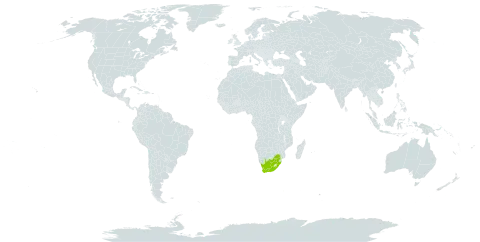Small, rigid shrublet. Leaves 3-foliolate, leaflets lanceolate, spine-tipped, flat, keeled, rigid, recurved, subglabrous. Flowers in a terminal cluster, yellow or reddish, wings glabrous, keel hairy, calyx hairy, lobes awl-shaped, spine-tipped, recurved, lowest lobe longer than others, subglabrous.
